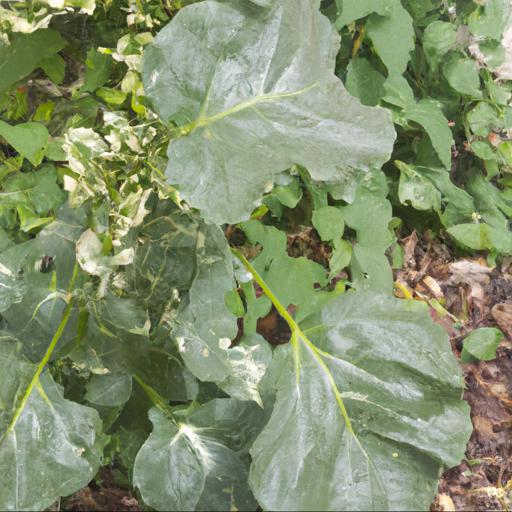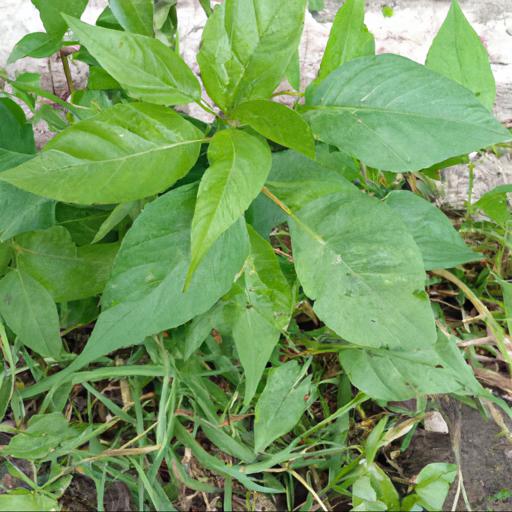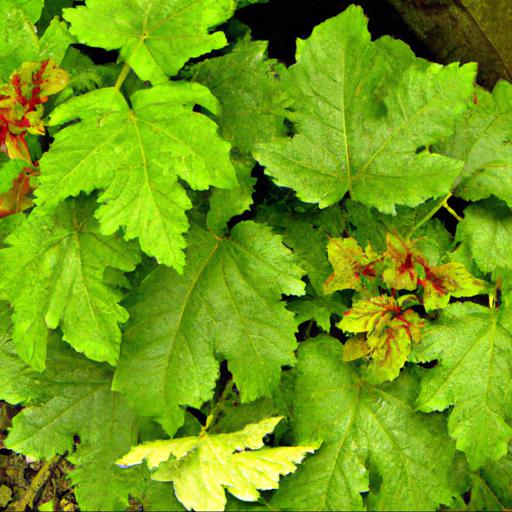Are you tired of the same old garden plants? Are you looking for something different to add a bit of excitement to your outdoor space?
If so, why not consider adding some thuggish garden plants to your garden? Thuggish plants are a great way to add a touch of wildness to your garden, while still providing a beautiful and unique display. They are strong and vigorous plants that can thrive in almost any environment, and can quickly take over an area if not managed properly.
With the right care, these plants can be a great addition to any garden. Read on to learn more about these unique and interesting garden plants.
Identifying thuggish garden plants

. As a UK garden expert, I have come across a wide variety of garden plants over the years, but one type that always stands out as troublesome is what I like to call the ‘thuggish garden plant’. These pesky plants can take over your gardens in no time and cause a lot of inconvenience and unsightly chaos.
Unfortunately, these plants are more common than you would expect as they come in all shapes, sizes, and colours. Things like bindweed, Japanese knotweed, and ground elder all fall into this category and can quickly spread in an unneighbourly way.
It’s important to be able to spot the signs of these plants early on in order to prevent them from taking over your garden. Some of the most common signs of a thuggish garden plant include fast-growing stems and leaves, thick invasive roots and rhizomes, and prolific self-sowing. If you notice any of these signs in your garden it is a good idea to take steps to eradicate them as soon as possible.
Depending on your area, you may need to seek professional help as some of these plants are particularly hardy and resistant to removal. It pays to be prepared and knowledgeable when it comes to thuggish plants, especially in a UK climate.
So, if you think your garden might be at risk, be sure to take steps to prevent and eradicate these troublesome plants before they ruin your summer.
Reasons why thuggish garden plants take over gardens

onlyAs experienced gardeners know well, an unruly garden bed can quickly become overrun with a variety of ‘thuggish’ garden plants. These plants, while often showy and attractive in the short-term, can quickly overtake a garden, sometimes to the detriment of other plants and flowers. Identifying why ‘thuggish’ garden plants can take over a garden is a great first step to understanding how to control the problem – or avoid it altogether.
The first reason why ‘thuggish’ garden plants can take over a garden bed is because they tend to be incredibly adaptive and resilient. These plants often thrive within a variety of environmental conditions, and some can even spread quickly and effortlessly with the help of wind and birds.
Additionally, these plants are usually able to tolerate wide ranges in soil moisture, and since most of these plants are perennials, it is not unusual to observe them living for several years in one location. All of this combined can help these plants to out-compete any other plants in the garden. The second reason why ‘thuggish’ garden plants can take over a garden bed is because of the potential for excessive propagation.
Some of these plants are capable of self-propagation through a method called vegetative reproduction. This means that they are able to create a large number of new offspring simply by cloning themselves, rather than relying on traditional seed production.
This can allow ‘thuggish’ garden plants to become considerably well-established in a single growing season if conditions are right. Finally, some ‘thuggish’ garden plants are quite aesthetically pleasing.
One of the most common examples is the ever-popular Purple Loosestrife (Lythrum salicaria). This plant can form impressive ground-covering masses with its beautiful purple flowers, making it particularly attractive to gardeners. Unfortunately, its aggressive growth makes it difficult to control without intervention.
In conclusion, ‘thuggish’ garden plants can quickly overtake gardens for a variety of reasons. Their adaptability and resilience, as well as their ability to propagate extensively and present a beautiful aesthetic, all contribute to their attraction – and potential for takeover. Understanding what makes these plants so successful is the first step in preventing or controlling their growth. With a little knowledge and management, gardeners can enjoy all of the benefits of these plants without risking compromise to their garden beds.
Tips for controlling thuggish garden plants

Controlling thuggish garden plants requires an approach that uses both prevention and aggressive management. Many people believe that simply planting these plants in the garden is enough to keep them in check, however, this is almost never the case.
Plants that are considered to be ‘thuggish’ often spread quickly and outcompete nearby plants, disrupting a garden’s natural balance and beauty. Fortunately, there are several strategies that can help keep these plants in line. The first step to controlling thuggish garden plants is to properly identify them.
Common types of thuggish plants include ivy, mint, and bamboo, among others. It is important to note that many non-invasive plants in the garden can also become aggressive if not monitored and managed properly. Once the thuggish plants have been identified, their growth should be limited through proper pruning and mulching.
Pruning helps keep the overall size of the plants in check by removing shoots and stems that are growing outside of the desired area. Mulching is also essential as it help prevent weeds and other plant growth from outcompeting the desired plants.
Finally, when planning garden designs, it is important to keep thuggish plants in mind. Thug plants should be planted in areas where their growth can be appropriately managed and contained. Positioning plants too close together may also create competition for resources such as sunlight, water, and nutrients.
Additionally, it is important to be cognizant of nearby plants, as some thug plants may be capable of overrunning other plants in the garden. In conclusion, controlling thuggish plants requires an informed and mindful approach.
Proper pruning and mulching, identification and containment of these plants, as well as conscientious planning for garden designs can help keep these plants in check and create a beautiful garden. Gardening does require work, but if the right steps are taken, thuggish garden plants can be managed and turn a garden into a true paradise.
Alternatives to thuggish garden plants
As a UK garden expert, it would be remiss of me not to discuss the huge problem of so-called “thuggish” garden plants. Such plants are particularly hard to manage or remove and tend to aggressively overtake other less dominant species, ultimately leading to a degraded, unvaried outdoor space as opposed to a thriving and diverse garden.
Thankfully, there are a number of alternatives available to combat this menace. One of the most helpful solutions is to plant native species that have adapted over time to the local climate. These plants are far better equipped to handle the unique elements of their environment, typically eliminating many pest and disease problems, as well as having an improved capacity to withstand flooding and drought.
Additionally, these native species can usually provide a great source of food and habitat for local wildlife. If you want to ensure your garden won’t be taken over by aggressive plants, it is key to put in place proper foliage maintenance.
This can include regular pruning and dividing, keeping your plants well nourished and ensuring they are receiving an adequate amount of light and water. Taking away competitiveness is the best way to prevent thuggish growth, so plants that are easy to maintain, such as evergreen shrubs, are an excellent choice. Herbs such as lavender and sage have also proven useful in creating a healthy, balanced landscape.
Finally, a good way to keep your garden under control is to incorporate container gardening. Containers allow you to restrict the spread of plants, giving you more control over your garden’s health and avoiding the need for invasive maintenance practices.
They also prevent thuggish species from taking over, allowing you to achieve colorful, vibrant plant displays without the worry of them running wild. With these options in check, you’ll have a better chance of creating a garden that is not only beautiful but also low-maintenance for years to come. Finally, if all else fails, don’t be discouraged – a healthy look can still be achieved with a few hardy plants that can outshine the troublemakers in the end.
Bottom Line
This article explores the unique and often overlooked world of thuggish garden plants. These hardy and often overlooked plants are perfect for those who want a low-maintenance garden without sacrificing beauty. We look at some of the best thuggish plants for your garden, and discuss how to care for them for optimal health and growth.
With a little bit of know-how and the right plants, you can create a beautiful and easy-to-maintain garden that will bring joy for years to come.
FAQ
What are some common thuggish garden plants?
Some common thuggish garden plants include English ivy, Japanese knotweed, and periwinkle.
How can thuggish garden plants be managed?
Thuggish garden plants can be managed by pruning them regularly, removing any dead or diseased parts, and dividing them when they become overcrowded. Additionally, providing adequate sunlight, water, and nutrients can help keep them healthy and prevent them from becoming too aggressive.
What are the benefits of having thuggish garden plants?
The benefits of having thuggish garden plants include increased soil stability, improved water infiltration, and increased biodiversity. Thuggish plants can also help to reduce erosion, provide habitat for wildlife, and improve air quality.
What are the drawbacks of having thuggish garden plants?
The drawbacks of having thuggish garden plants are that they can spread rapidly, crowd out other plants, and be difficult to remove. They can also be invasive and cause damage to the surrounding environment.
How can thuggish garden plants be identified?
Thuggish garden plants can be identified by their tendency to spread aggressively and take over other plants in the garden. They may also have shallow roots that are difficult to remove, or they may have invasive root systems that can spread quickly.
What are some tips for controlling thuggish garden plants?
1. Prune regularly to keep plants in check. 2. Mulch around plants to help retain moisture and discourage weed growth. 3. Divide and replant overcrowded plants to reduce competition for resources. 4. Use a root barrier to prevent aggressive roots from spreading. 5. Plant in containers to limit the spread of thuggish plants. 6. Plant companion plants to help crowd out thuggish plants. 7. Control weeds regularly to reduce competition for resources. 8. Use a pre-emergent herbicide to prevent weed seeds from germinating.

